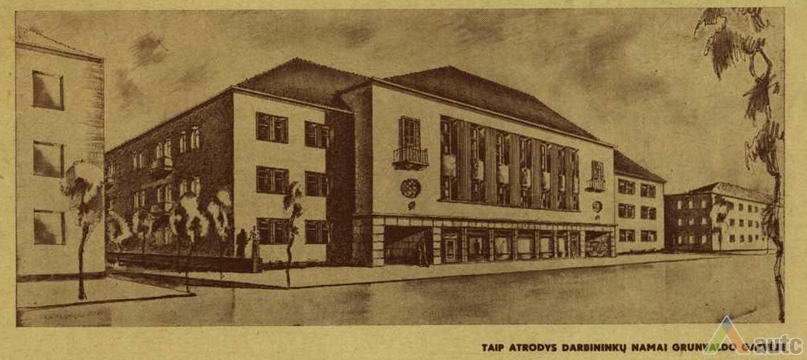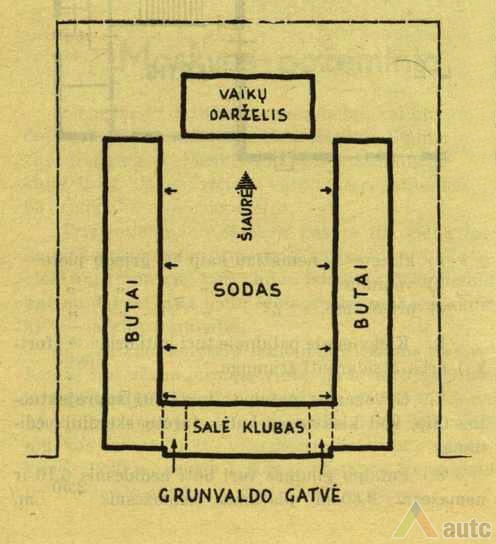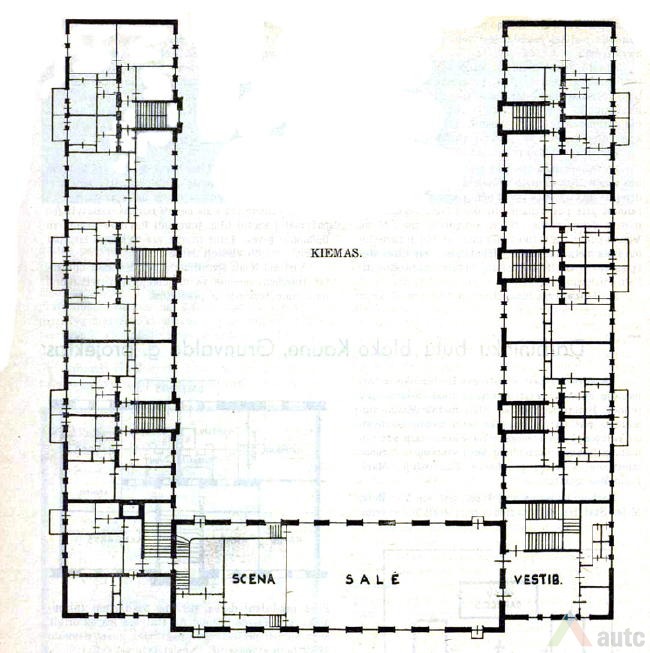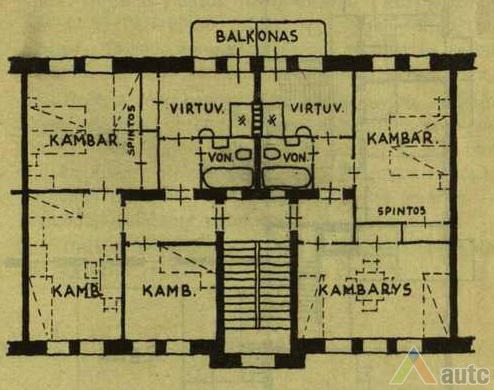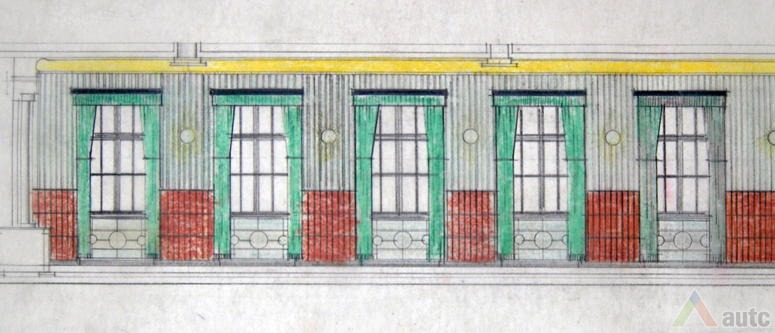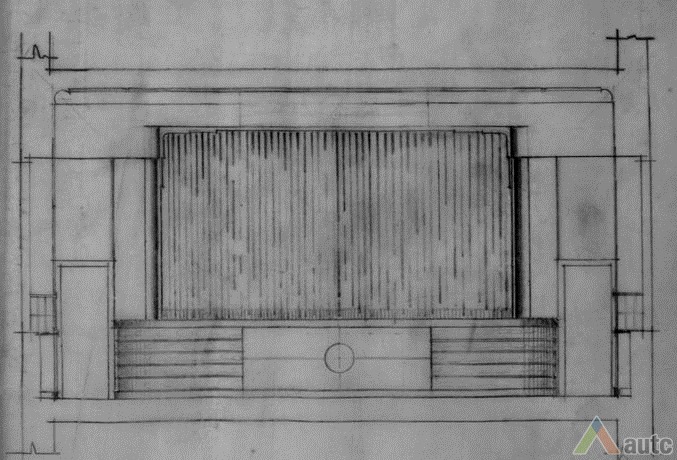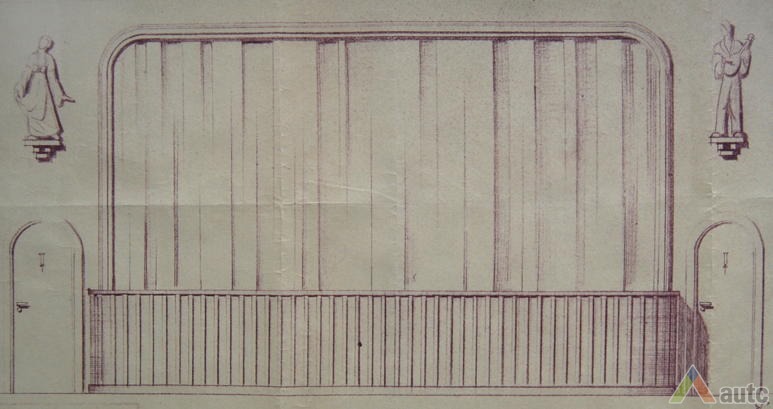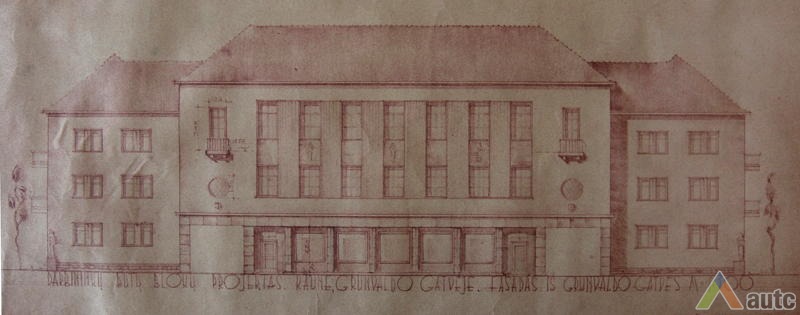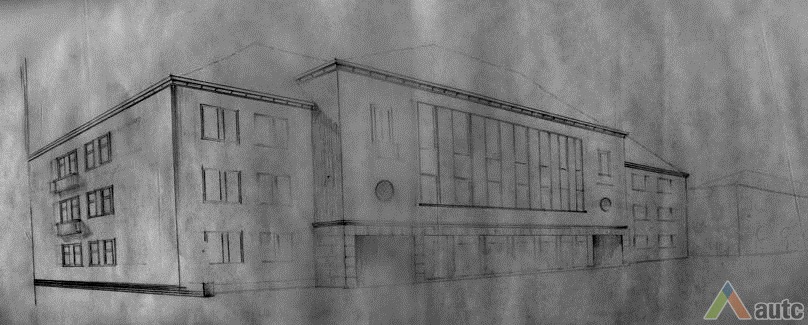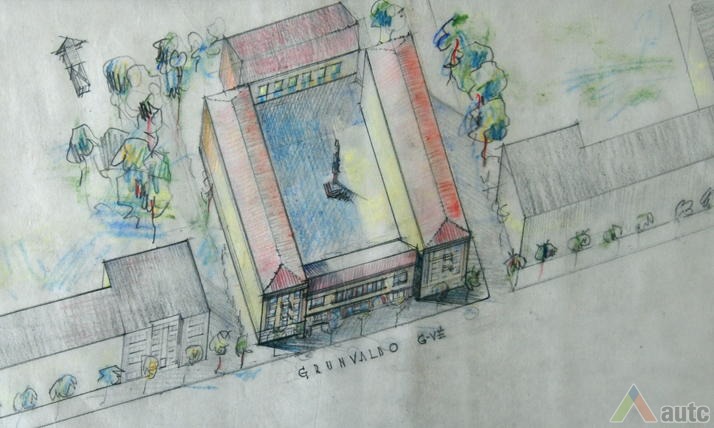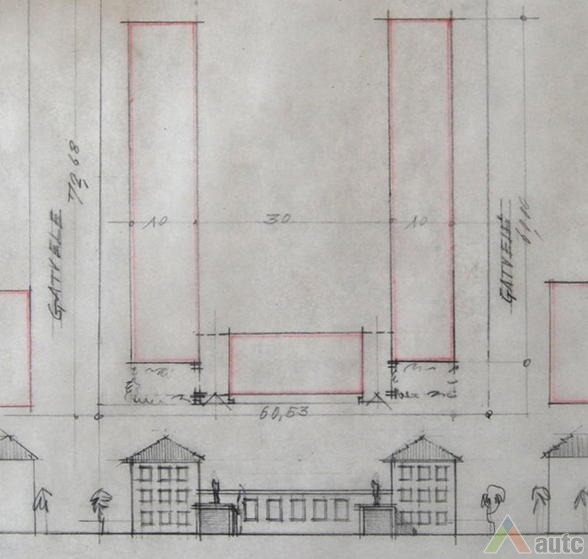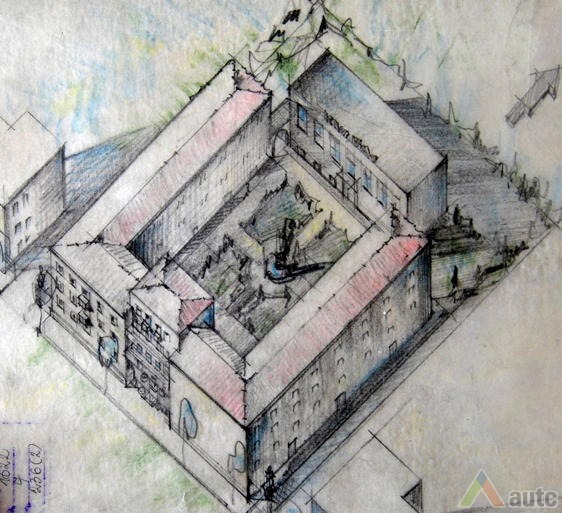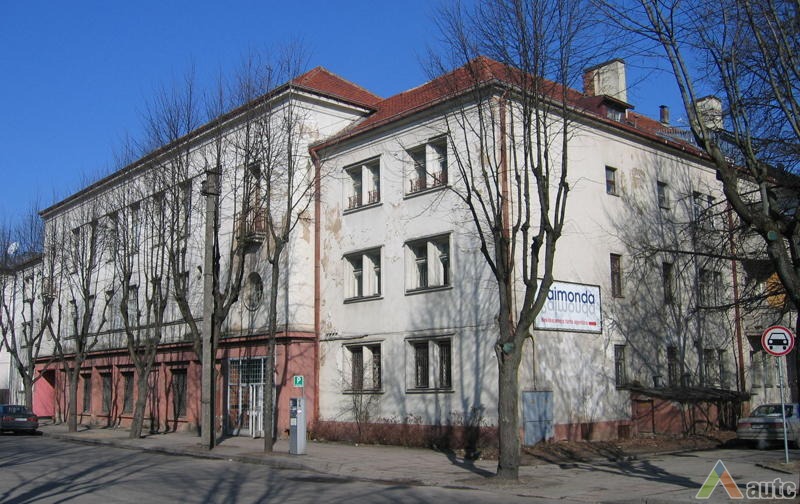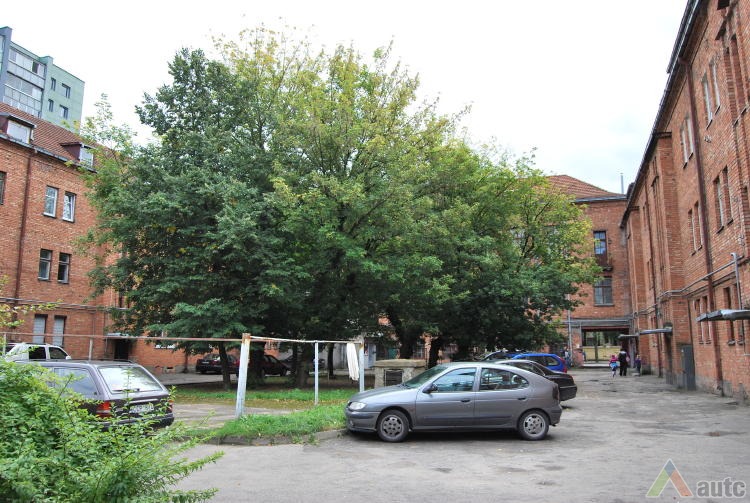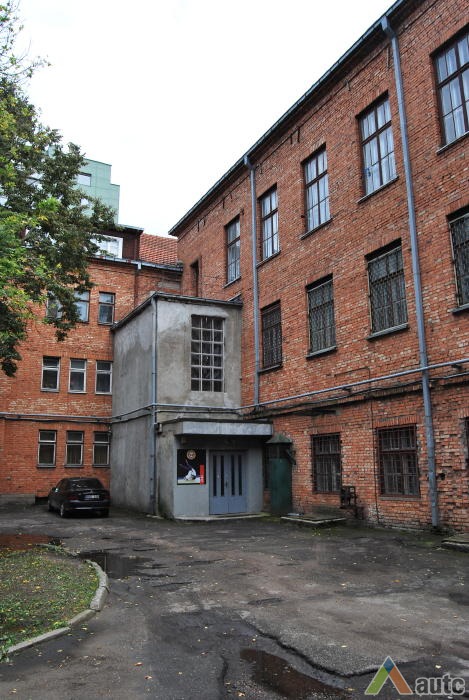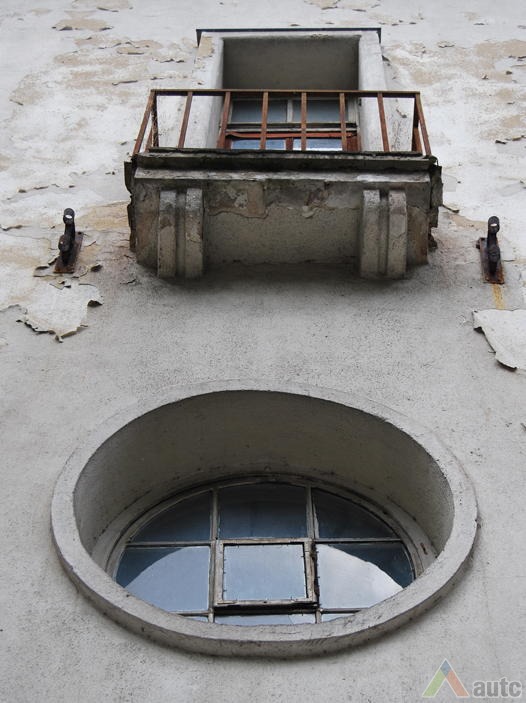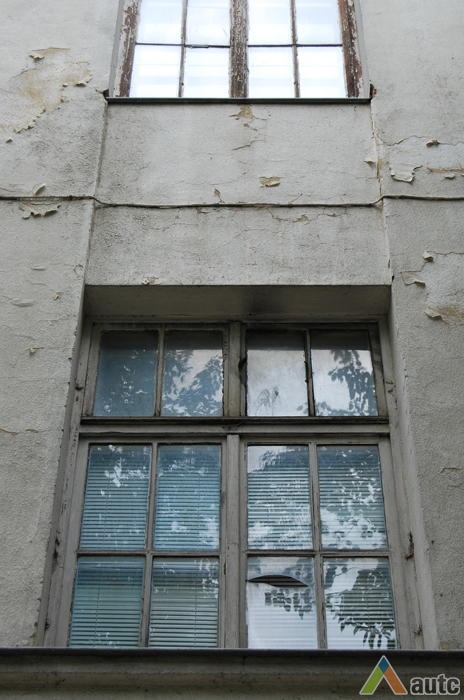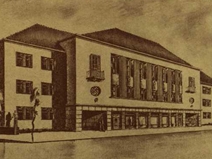
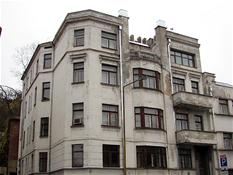
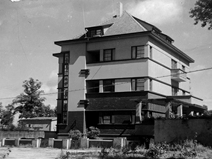
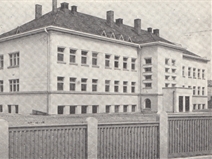
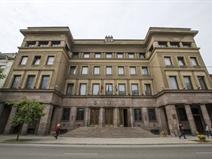
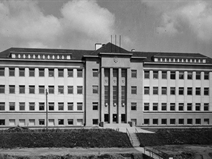
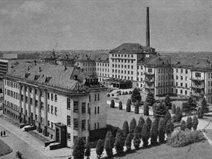

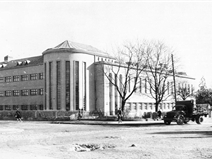
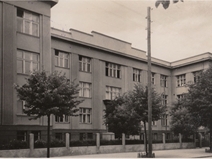
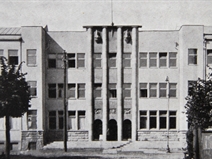
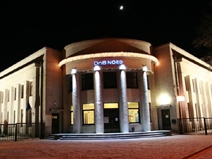
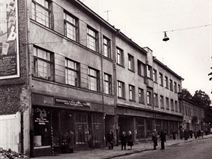
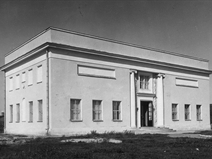
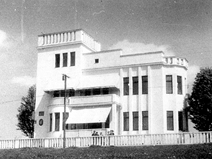
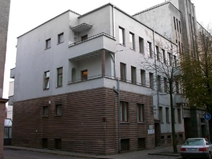
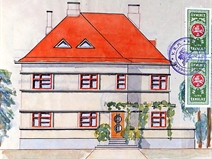
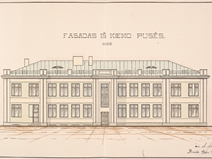
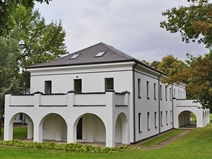
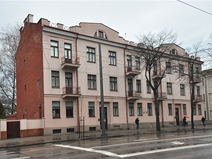
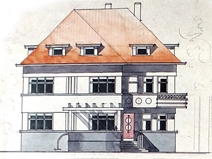
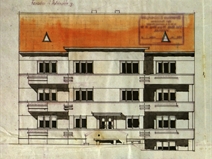
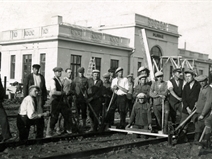
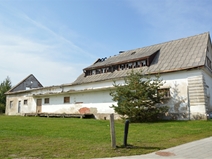
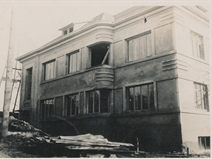
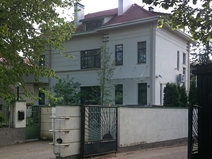
The history of this apartment house began during the interwar period, as a result of the attempts of the National Committee of Construction to solve the issue of providing workers, craftsmen and civil servants with accommodation, since quick growth of migration out to cities, especially Kaunas, meant that “the majority of population belonging to these segments was forced to live in sub-standard apartments”. Even shacks, barracks, basements and other slums which should have long been torn down in normal conditions, were home for a lot of the poor”.
According to Lithuanian interwar architectural researcher J. Kančienė, the draft of the building was prepared in 1936 for the company named Tilmans ir Ko. However, the construction did not begin during the Lithuanian independence period. The final draft was approved following the start of the first Soviet occupation on 17 August 1940. Judging from the press of that time, we can guess that the first project was slightly adjusted according to the new design requirements set forth by the apartment construction division of the Construction Department of the Ministry of the Interior of that time. Under these requirements, the so-called “residential unit” was to include multifunctional facilities ranging from laundry, warehouses for wood and hideouts to cultural facilities, a nursery, a kindergarten and commercial spaces. The building was most likely completed in the first half of 1941, before the beginning of WWII.
A house of 40 apartments is an interesting and a quite rare example which shows how Soviet Lithuania picked up architectural ideas from interwar Lithuania. It is also one of those rare examples of pre-industrial Soviet residential construction during the first occupation. In 1940 there were plans for a quite extensive pre-industrial residential construction campaign which was to include Vilnius (five houses of 24 apartments), Šiauliai (two houses of 24 apartments), Jurbarkas (four houses of eight apartments), Panevėžys, Telšiai (one house of 24 apartments) and other cities. Apartment houses quickly became a means of propaganda war for workers. For example, in 1942, under German rule, fingers were pointed at Soviet propaganda which claimed that “by 1941 there will be 105 houses with 560 apartments built in Kaunas and that the municipality will build houses with 162 apartments. Thus, by 1941 there will allegedly be 722 apartments built and furnished.”
Vaidas Petrulis
